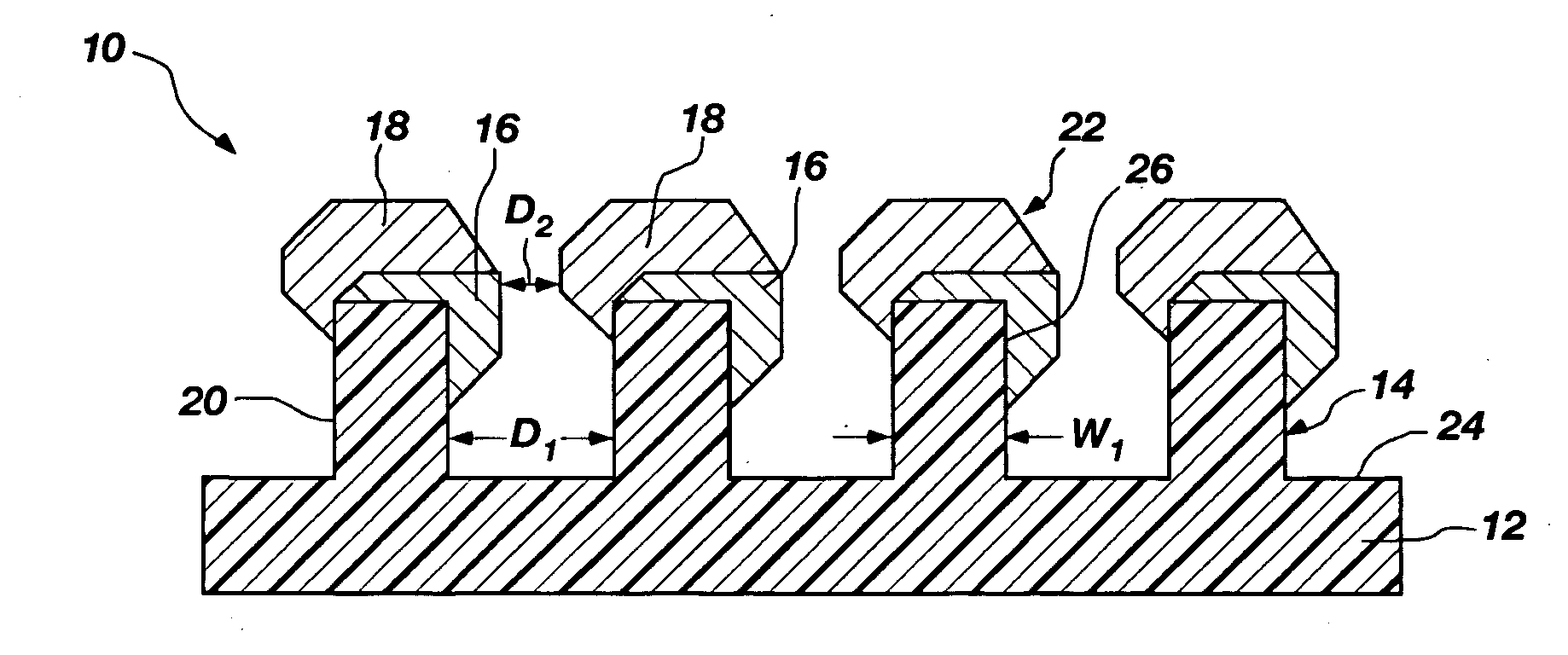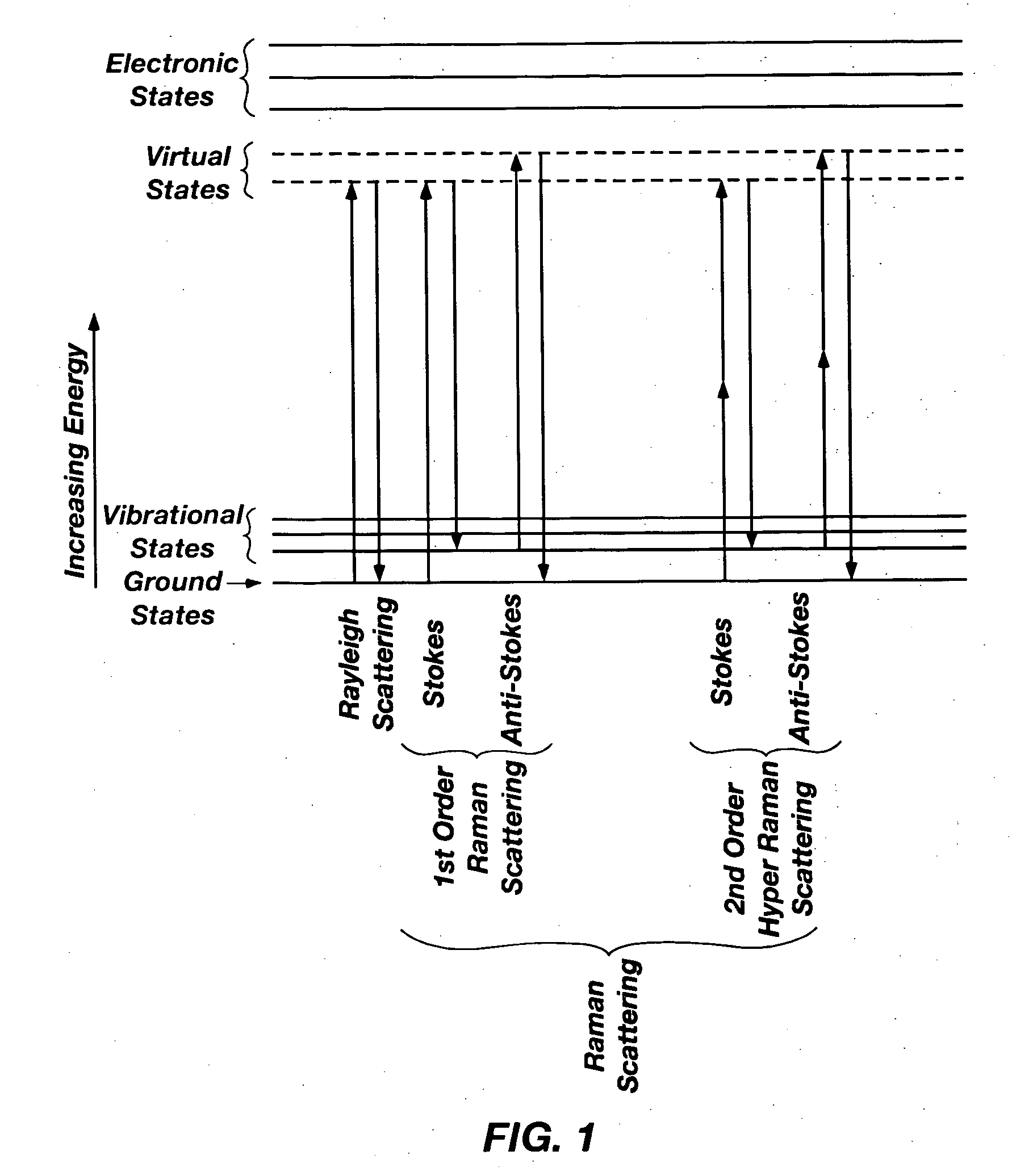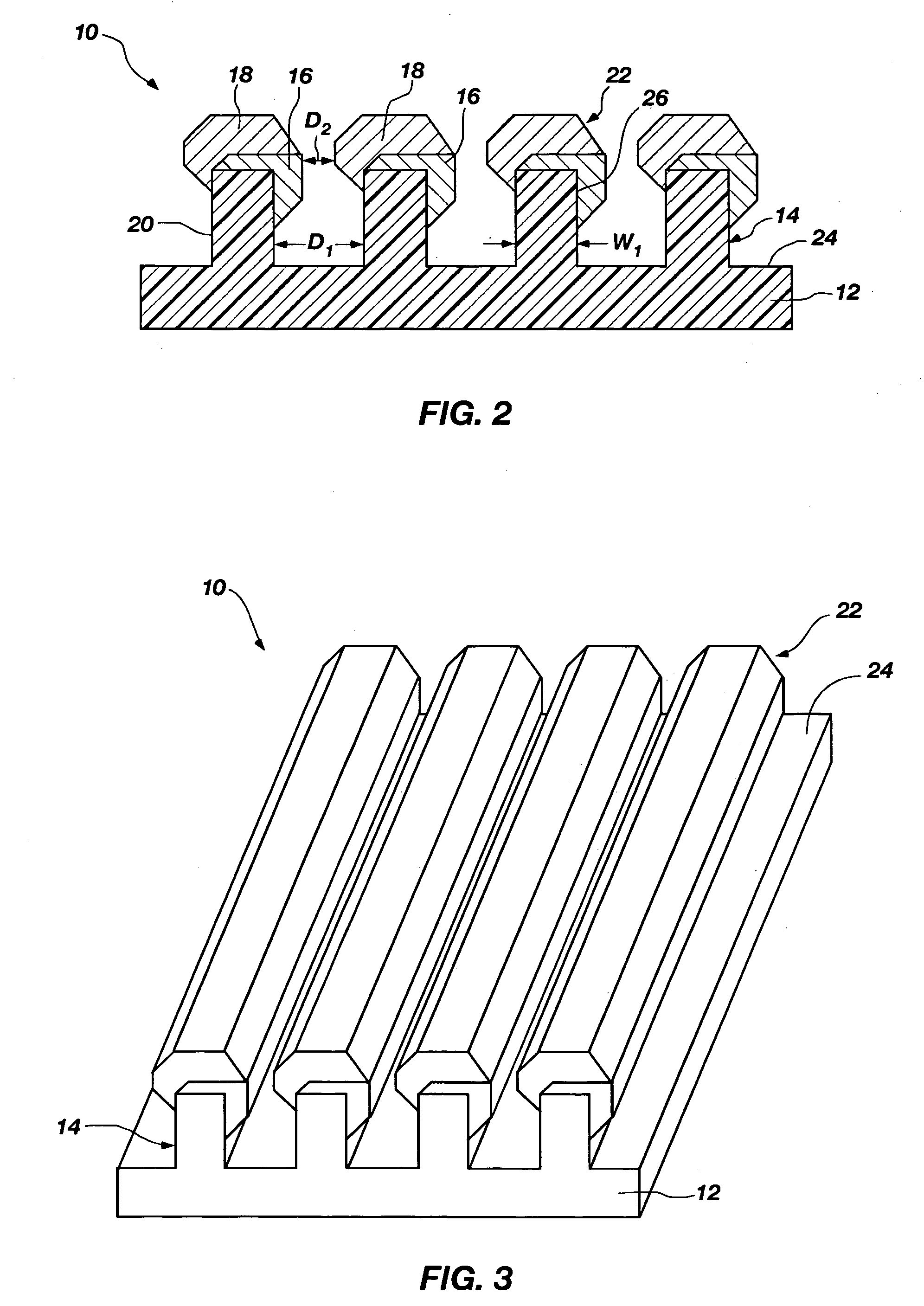Nanoscale structures, systems, and methods for use in nano-enhanced raman spectroscopy (NERS)
a raman spectroscopy and nano-enhanced technology, applied in the field of raman spectroscopy, can solve problems such as difficulty in detection of raman-scattered radiation
- Summary
- Abstract
- Description
- Claims
- Application Information
AI Technical Summary
Benefits of technology
Problems solved by technology
Method used
Image
Examples
Embodiment Construction
[0040]The term “analyte” as used herein means any molecule, molecules, material, substance, or matter that is to be analyzed or detected by Raman spectroscopy.
[0041]The term “nanoparticle” as used herein means a particle of any shape having cross-sectional dimensions of less than about 100 nanometers. Examples of nanoparticles include, but are not limited to, nanodots (including quantum dots), nanowires, nanolines, nanocolumns, and nanospheres.
[0042]The term “Raman signal-enhancing material” as used herein means a material that, when formed into appropriate geometries or configurations, is capable of increasing the number of Raman scattered photons that are scattered by an analyte when the analyte is located proximate to that material, and when the analyte and material are subjected to electromagnetic radiation. Raman signal-enhancing materials include, but are not limited to, silver, gold, and copper. Raman signal-enhancing materials are used to form Raman signal-enhancing structur...
PUM
 Login to View More
Login to View More Abstract
Description
Claims
Application Information
 Login to View More
Login to View More - R&D
- Intellectual Property
- Life Sciences
- Materials
- Tech Scout
- Unparalleled Data Quality
- Higher Quality Content
- 60% Fewer Hallucinations
Browse by: Latest US Patents, China's latest patents, Technical Efficacy Thesaurus, Application Domain, Technology Topic, Popular Technical Reports.
© 2025 PatSnap. All rights reserved.Legal|Privacy policy|Modern Slavery Act Transparency Statement|Sitemap|About US| Contact US: help@patsnap.com



